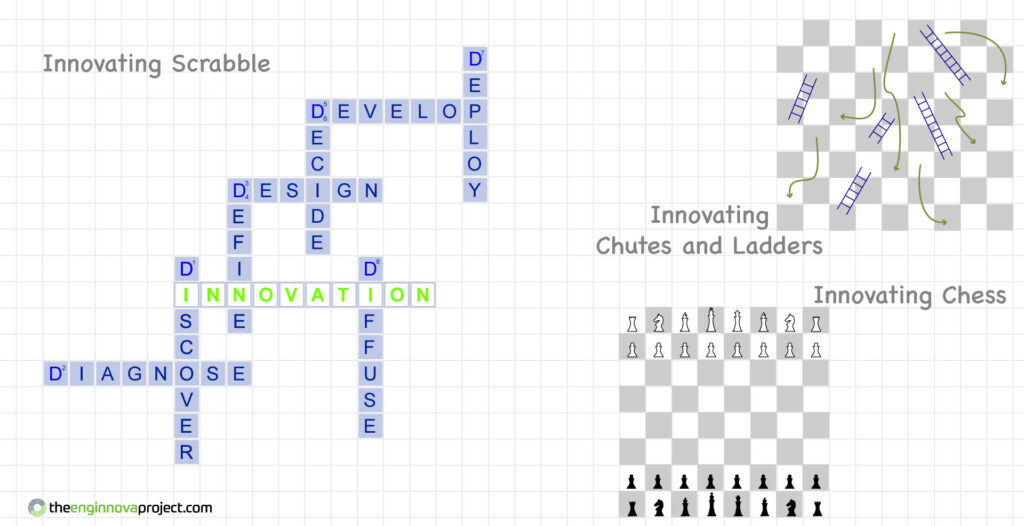
Businesses often use board game metaphors to describe their innovating process. Three common board game metaphors are “Chess”, “Chutes and Ladders”, and “Scrabble”.
The “Chess” metaphor is used because chess is strategy driven and played tactically. The chess metaphor breaks down because innovating has many more sources of uncertainty. The only source of uncertainty in chess is your opponent’s next moves. The boundaries of the game, the rules regarding moves, and the placement and movement of game pieces are known and visible. The game is limited to two players. None of these limiting conditions apply to innovating. Innovating is not a well-structured and defined game with limited sources of uncertainty like “Chess”.
The ”Chutes and Ladders” metaphor is a little more apt. “Chutes and Ladders” has defined boundaries and follows a prescribed path; has “opportunities” to be taken advantage of (i.e. ladders) and “threats” to be avoided (i.e. chutes); the placement and movement of game pieces is known and visible; and the game can involve multiple players. But the “Chutes and Ladders” metaphor breaks down because the movement of the game pieces is entirely random (e.g. based upon the roll of a die). The winner of the game is the player who is luckiest in the moment.
The ”Scrabble” metaphor comes closer to the mark. The boundaries of the game are fixed but the limiting conditions emerge during play; your game pieces (i.e. the letter tiles) are unknown to your competitors; your game pieces and how to play them on the board are based upon an adaptive “connect-the-dots” skill; the game can involve multiple players; each player deploys his own strategy and tactics based upon his vision of how he intends to win the game. Equally important is the fact that the number of sources of uncertainty that affect how you play and who will win is similar to innovating. The winner of the game is the person who makes the best connect-the-dots decisions in a highly uncertain environment.
The business that plays “Innovating Chess” trends towards low hit rate innovations because it suppresses invention in favor of business strategy and process control. This business believes delivering innovations is simply a matter of more disciplined management.
The business that plays “Innovating Chutes and Ladders” trends towards low hit rate innovations because it subscribes to the Magic Myth. This is the myth that innovating requires good luck, serendipity, and a little bit of magic. This business believes delivering innovations is mostly a matter of luck.
The business that plays “Innovating Scrabble” is best positioned to achieve high hit rate innovating. This business believes that delivering innovations is an organizational skill. Innovations result from adaptive decision making and connecting-the-dots better than the competition.
Which “Innovating Game” are you playing?
